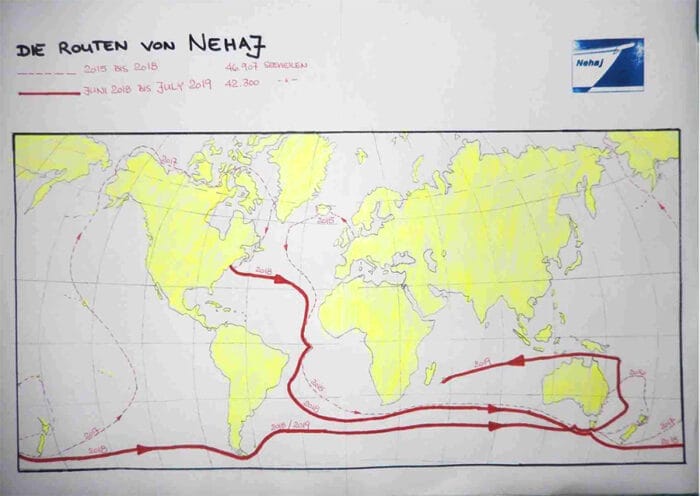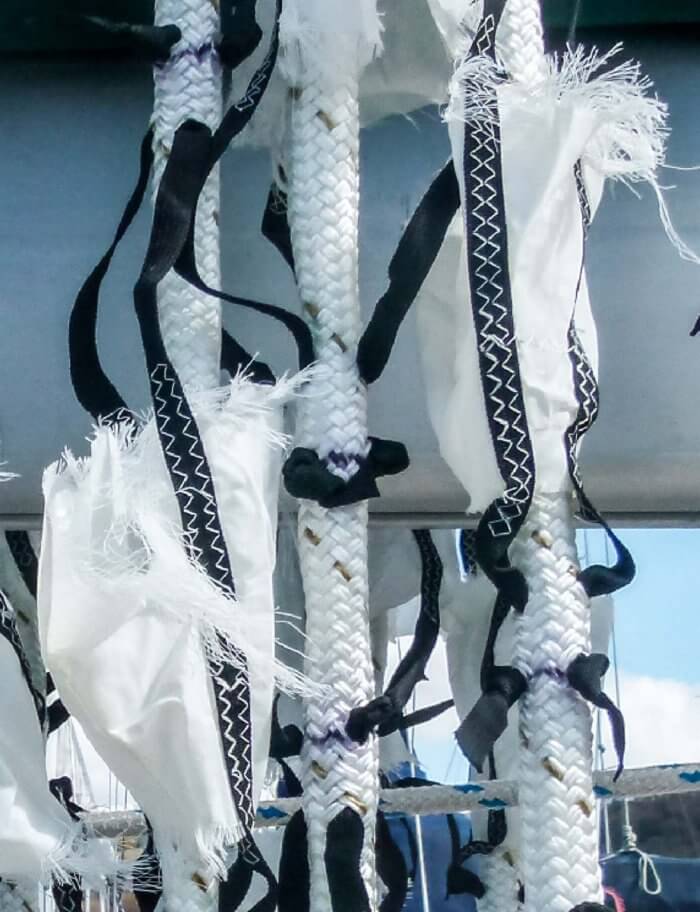
One of the things that makes me crazy is offshore sailors who claim that getting rolled upside down is just a risk of being out there; yeah, I’m looking at you Don McIntyre.
The other, and related, thing than makes me nuts is that big waves, twice (or more) the size of the significant wave height, are popularly called “rogues”, with the implied assertion that they are very rare and and getting rolled by one is bad luck.
The efficacy of the Jordan Series Drogue (JSD) has been proved in countless deployments over decades, which blows both of the above out of the water, but still sailors go out there without a properly installed JSD and then whimper that they were unlucky when their boat gets rolled.
They were not unlucky, they were un-seamanlike.
We have an entire Online Book dealing with all of this, but it’s still worth publicizing the latest proofs of the JSD.
To that end, our friend Susanne Huber-Curphey has just completed her second La Longue Route (The Long Way) voyage in her Koopmans 39-foot aluminum cutter Nehaj.

For those of you not familiar with it, La Longue Route refers to a voyage made by Bernard Moitessier starting in 1968, and the book he wrote about it.
Moitessier, while in second place behind Robin Knox-Johnston in the Golden Globe Race, decided, after rounding Cape Horn, to keep on going in the Great South rather than turning north for Europe with a good chance of victory.
He then sailed across the South Indian Ocean for the second time before finally ending his voyage at Tahiti after over 37,000 miles of non-stop solo ocean sailing.
In 2018 Susanne entered a loosely organized round-the-world voyage to commemorate Moitessier’s from 50 years before, and like him she carried on after rounding Cape Horn for a second transit of the South Indian Ocean before finally stopping in Tasmania.

After many other amazing voyages in the intervening years, Susanne set out again in 2024 on roughly the same route and just completed it in New Zealand a few weeks ago.
Add the two together and she sailed 66,575 miles over 521 days.
Both Susanne’s La Longue Routes qualify as one of the great small boat voyages of all time, never mind both together, an achievement that leaves me in open-mouthed admiration.
Anyway, here’s the Tip:




